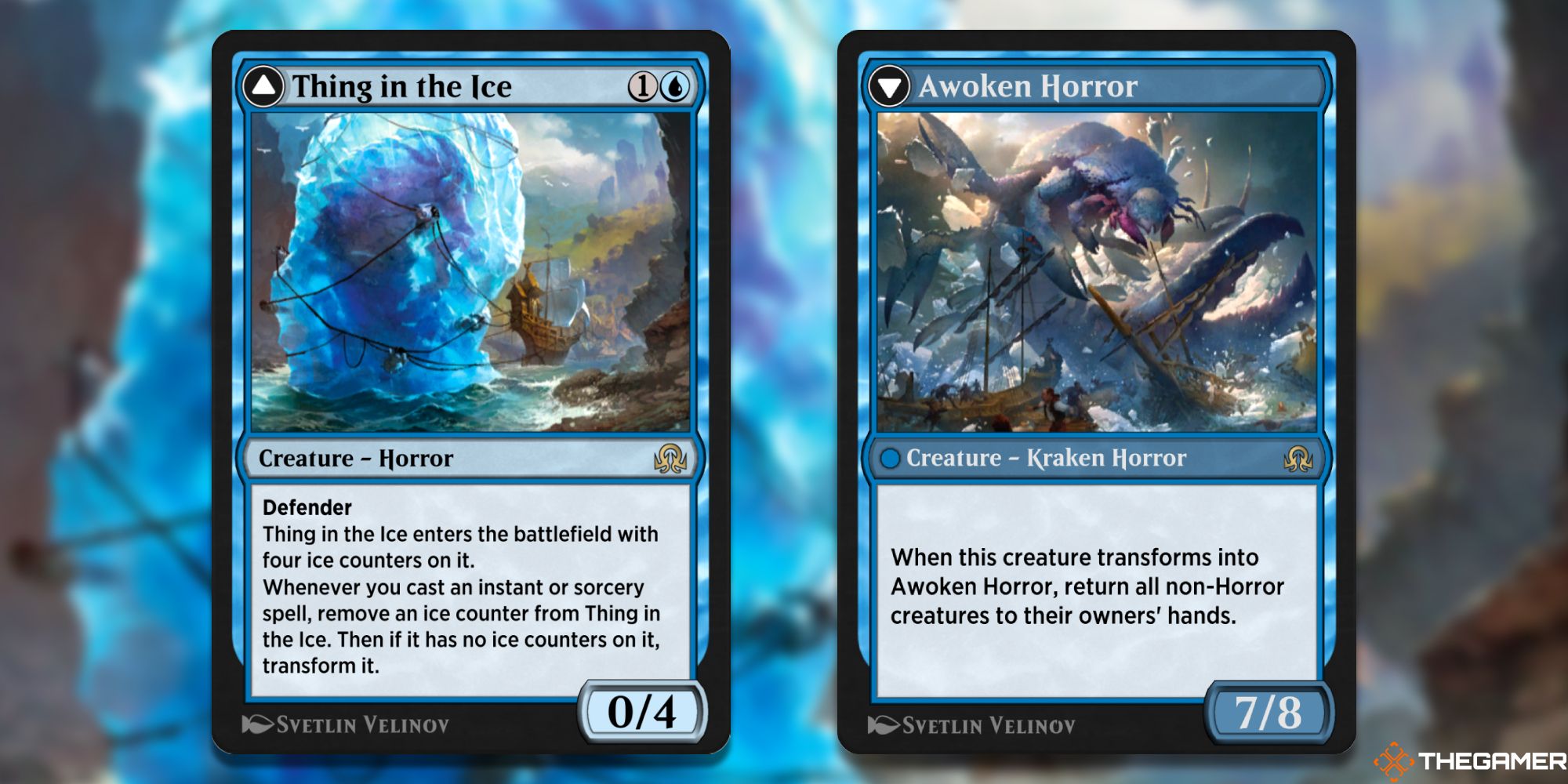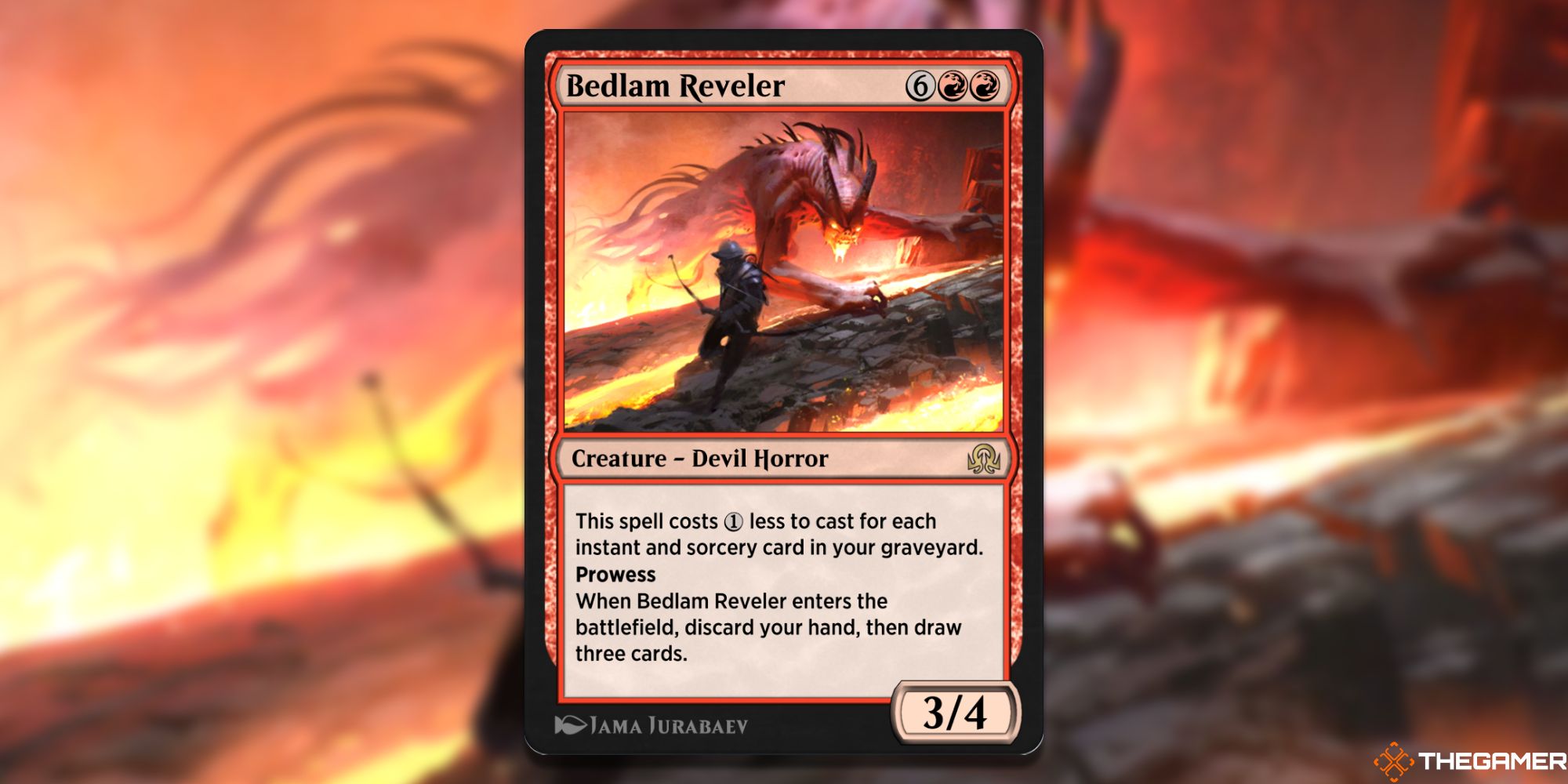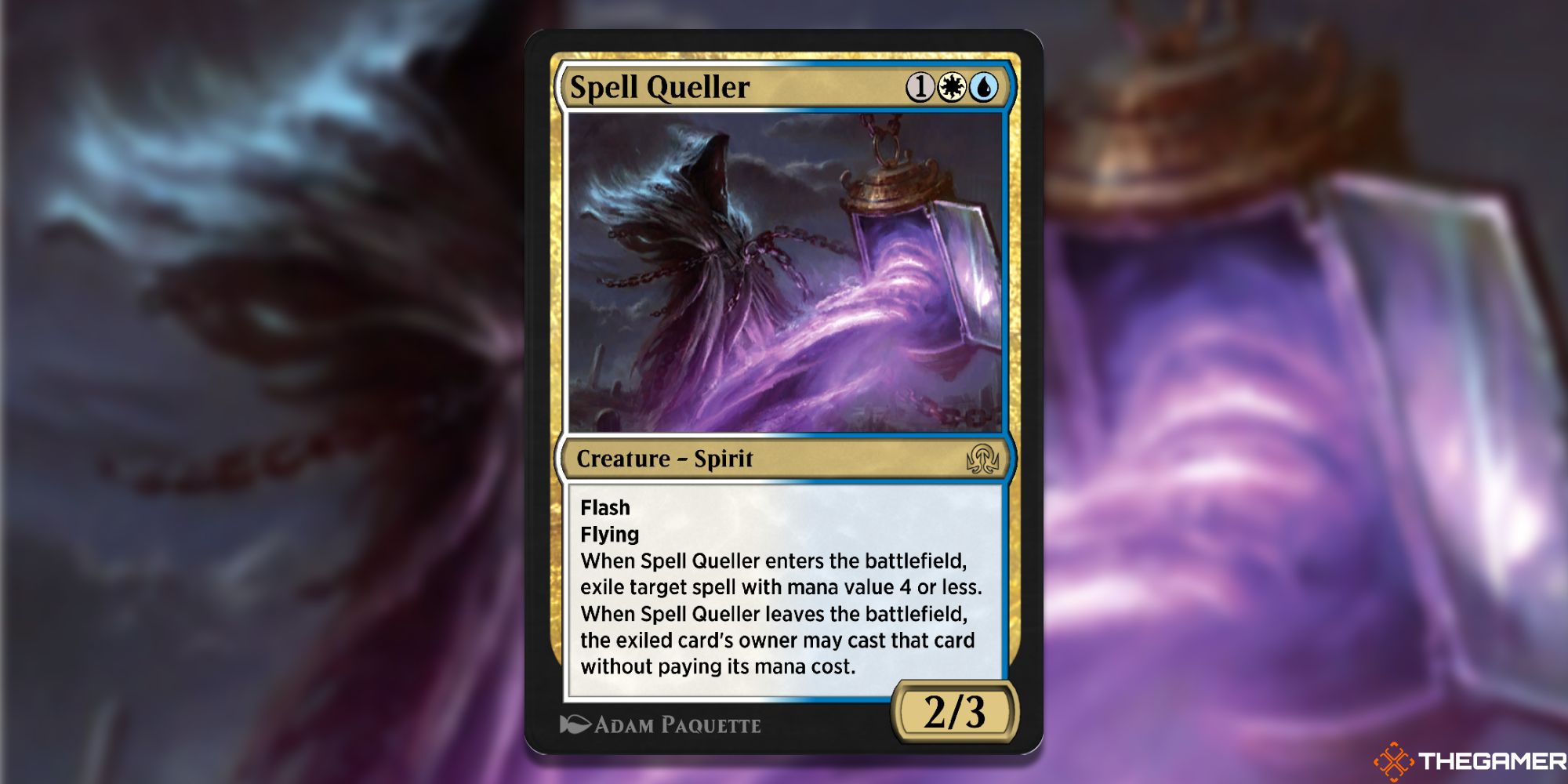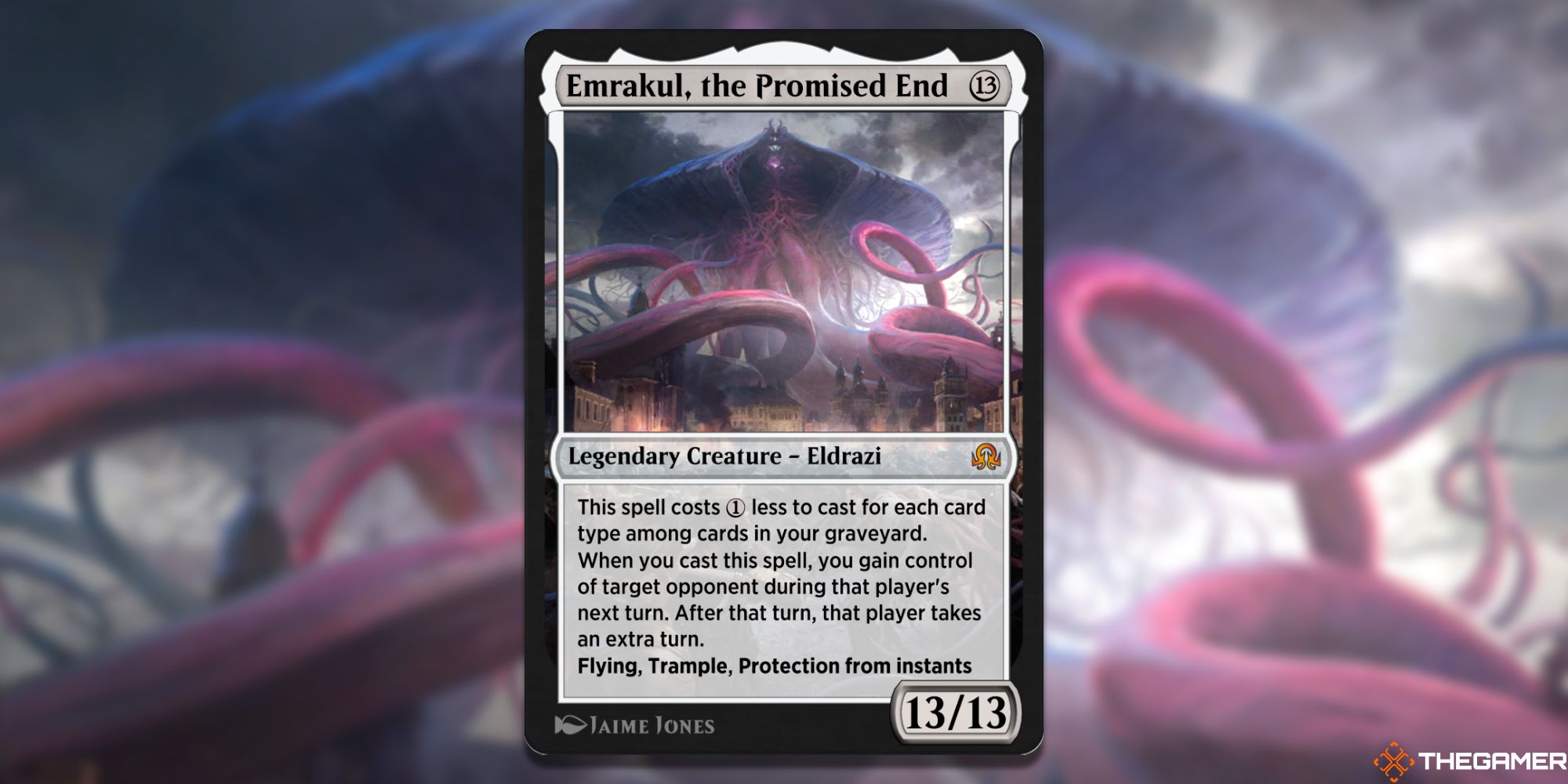Besides the glaring oversight of not calling it Shadows Over Innistrad Reanimated, Magic: The Gathering’s latest Arena-exclusive reprint expansion looks like an excellent release all around, packing the best cards from Shadows Over Innistrad and Eldritch Moon into a tightly-curated draft experience.
It’s easy to forget how many powerful, archetype-defining cards there were in these two sets, but seeing them anew is a welcome reminder. It’s a block that impacted Standard, Commander, Modern, Legacy, and beyond, with some cards even serving as the bedrock of powerful new meta strategies. Many of these cards were, as is often the case in the modern game, creatures.
10 Thing In The Ice/Awoken Horror
A rare instance of community hype actually paying off, Thing in the Ice didn’t just look like an immensely powerful tempo finisher for spellslinger decks; it actually was one. It’s not hard to see why – serving as a roadblock against aggro in the early game, then as a 7/8 that wipes the board later on, all for the price of two mana, the Thing is one of the most efficient cards the game has seen.
This raw power led to the card playing starring roles in various red/blue tempo decks, from Izzet Drake to Izzet Phoenix. The card served as a nice alternative win condition wherever it appeared, coming down early and cheaply and threatening to flip the game on its head if your opponent didn’t find an answer in time.
9 Bedlam Reveler
Over the years, two of the most consistently powerful effects in Magic have been cost reduction and card draw: Bedlam Reveler combines both into a neat demonic package. While a 3/4 with prowess for eight mana is awful, it can cost as little as two mana with enough instant and sorcery fuel in the graveyard.
And that’s before you consider the ‘draw three cards’ part of the card. It does require you to discard your existing hand first, but in the decks that run this card, those that are heavy on low-cost spells, it shouldn’t be much of an issue to empty it out. Put it all together, and you have a staple in multiple formats.
8 Grim Flayer
Grim Flayer combines card selection, graveyard filtering, and an aggressive body to devastating effect. For just two mana, he can trample over 1/1 tokens and set up your graveyard, easily turning on his own delirium effect in a couple of swings. Once this comes online, the Flayer grows into a mighty 4/4, capable of contesting your opponent’s midgame threats while continuing to ensure the quality of your draws.
The archetypal Midrange card, Grim Flayer, has seen consistent play in Modern Jund decks and fringe play in other grindy strategies. If your deck makes use of the graveyard or likes winning creature combats, then this card will make a fine addition.
7 Thraben Inspector
While unassuming at first glance, those with a discerning eye could see the potential in this white one drop, which proceeded to become a staple in various strategies. Playing White Weenie and need a decent one drop that provides value? Call Thraben Inspector. Playing Affinity and need a cheap artifact source in the early game? Call Thraben Inspector.
From Pauper to Pioneer, this humble Human has made many a home for itself, always overperforming for its very reasonable rate. It has so many edge cases and applications that it’s probably harder to find a white deck it doesn’t fit into rather than one it does.
6 Relentless Dead
One of the most outrageous type-specific support cards of all time, Relentless Dead likely would have propelled Spirits or Humans into tier zero status had it belonged to one of those types instead. As it stands, the card is simply a very strong addition to a deck that, while never quite cracking the big leagues, always comes back for more.
Not only can Relentless Dead return itself to your hand on death for just one black mana, but it also lets you essentially recast any other Zombie from your graveyard at the same time. This makes it an absolute menace in a long game, capable of sustaining your Zombie horde almost single-handedly, ensuring that, while it hasn’t made a splash in the likes of Modern, there will always be a home for this zealous Zombie in Commander.
5 Prized Amalgam
While it may look like a Zombie support card at first glance, Prized Amalgam is actually very flexible, slotting naturally into any deck that cheats creatures out of the graveyard, such as Dredge and Izzet Phoenix. This widespread usability landed the Amalgam homes across many formats, including Commander, Modern, and even Vintage.
A free 3/3 doesn’t sound like much, but it can easily dominate the game in multiples or over the course of several reanimations. Given that the decks that play the Amalgam have ample ways of milling it into your graveyard, you never even need to cast the card in order to haunt your board, and your opponent’s dreams with it.
4 Spell Queller
A card that could have easily been called ‘The Ghost of Tempo Past,’ Spell Queller has some of the most absurd swing potential seen in modern Magic. Presenting a nigh-unconditional, albeit temporary, counterspell on a fairly-costed flying body, the card has been a stalwart in Pioneer, Modern, and even Legacy since release.
While it is a Spirit and therefore fits perfectly into any given Spirit deck, Spell Queller is so powerful that it sees play as a generic disruption tool in other eternal decks, such as Modern Knightfall and Legacy Stoneblade. It’s a card that is both an answer and a question rolled into one, making the prospect of playing into open Azorius mana a terrifying one.
3 Thermo-Alchemist
Every card in a Burn deck is evaluated based on how much damage it can deal to an opponent in a given game. While the floor on this value is low for Thermo-Alchemist, the ceiling is higher than on most staple Burn cards. Given enough turns, and enough Lightning Bolt-esque burn spells, Thermo-Alchemist can rack up some serious numbers, tapping your opponent’s life away with reckless glee.
Because of this, Thermo-Alchemist has secured itself a home in Burn decks across multiple formats, including Pauper, Modern, and even Commander, thanks to the handy ‘each opponent’ clause on the card.
2 Emrakul, The Promised End
While many dismissed the second coming of Emrakul as anything but during reveal season, seeing her as too expensive and not impactful enough, those first impressions couldn’t have been further from the truth. Not only was the Promised End powerful, but it was also so powerful that it was eventually banned during the Standard it appeared in.
This power came from a combination of factors: the surprisingly effective cost reduction, the ability to mess up your opponent’s strategy by taking their turn for them, the relevant protection effect, and just the raw 13/13 flying trample body. These qualities have given the card life beyond its exile from Standard in formats such as Modern, Commander, and even Legacy.
1 Tireless Tracker
An efficient, self-sufficient engine of a card, Tireless Tracker kept Midrange decks running during its time in Standard and continues to do so in Modern today, appearing in decks like Jund. Everything you need to know about the Tracker’s power is written on the card itself: it creates Clues, and grows larger whenever you make use of them.
This creates a nice internal synergy, wherein the additional draws your Clues grant ensure you keep hitting land drops, creating more Clues and growing the Tracker into a serious threat for your opponent to deal with. It’s a self-fulfilling prophecy and one that’s unlikely to end well for anyone facing the Tireless Tracker down.











